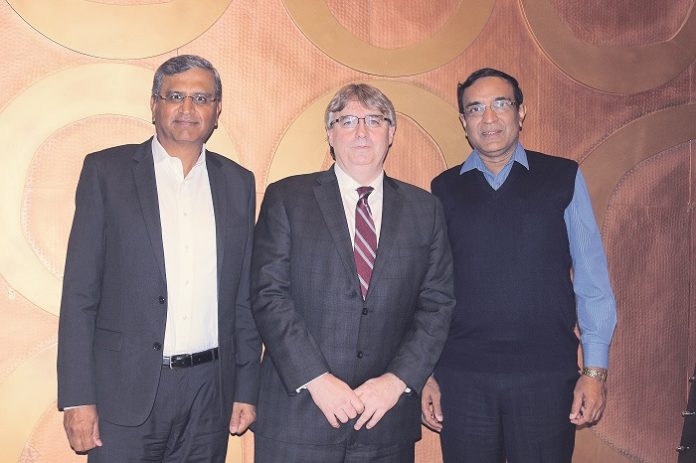
We met Kodak’s global chief executive officer John O’Grady on his recent visit to India just preceding the PrintPack exhibition. This was O’Grady’s first visit to the country and apart from meeting customers and Kodak India staff, Grady was keen to have a firsthand understanding of this much acclaimed and formidable market. In the wide-ranging conversation he was accompanied by Komal Sharma, who is the managing director of Kodak in the Middle East, Africa, South Asia, Australia and New Zealand as well as Bhalchandra Nikumb, the head of Kodak’s Indian graphic arts operation that also looks after some adjacent country markets.
O’Grady explained that he wanted to understand the Indian market better as the new, more focussed Kodak continues to grow in the graphic arts business, especially in workflow and in offset and flexo printing. “What we’re trying to do is look at the opportunity here and get a sense of what is going on. We’re also trying to get a sense of what import substitution is possible and we are aware that there is talk about ‘Make in India.’”
“What we’re trying to do is look at the opportunity here and get a sense of what is going on. We’re also trying to get a sense of what import substitution is possible and we are aware that there is talk about ‘Make in India.’”
Discussing the Indian market, Nikumb said that while newspapers seem to be growing especially in the smaller cities, commercial offset print is somewhat flat while book printing tends to be somewhat seasonal. Nevertheless, Kodak which dominates the thermal CtP market in the country, is meeting with great success both with its CtP devices and its Sonora process-less offset plates. In the packaging segment, the company has been quite successful over the past four years with its Flexcel NX imagers as well as its polymer plates.
We raised the question with O’Grady of the slow and somewhat delayed sale of Kodak’s digital inkjet enterprise business, essentially its Prosper and Ultrastream technology. At the last edition of drupa in May 2016, the company said there were several suitors and that the sale would happen by December 2016. O’Grady says that the sale of the Prosper division is a fairly large and complex issue, “To scale the high volume inkjet technologies, we need to have a bigger company. Versamark will stay with us. There are more than a hundred Versamark printheads installed in India and thousands worldwide. We have cash that we feel we can invest in other technologies that can bring returns at a higher level than by merely investment in inkjet. Flexo is a good example of that and so is Sonora. We can commercialize some of our other science and technology research. We have a whole slew of products that are making their way into the design stage and ultimately into manufacture and products.”
Speaking further about Kodak’s recent performance, O’Grady said, “Kodak has been hitting quarterly guidance numbers ever since it emerged out of Chapter 11 in September 2013. We said we need to address our debt and we had a major change in our debt structure last year. Kodak continues to invest in the graphics businesses that are doing exceptionally well and we also have new products coming up.”
O’Grady said that Kodak’s investment in workflow, CtPs and automation has been continuous, which has become more relevant everywhere, even in Asia. “Kodak is going back to the core—the graphics side. Our strategy has not changed. We have invested heavily in offset. In China and other places in the last two-and-a-half years, we have launched an offset product every quarter. Sonora has been a outstanding success. This year we hope to continue to grow Sonora in double digits. In India, although the base is smaller, the growth for Sonora is even higher.”

















